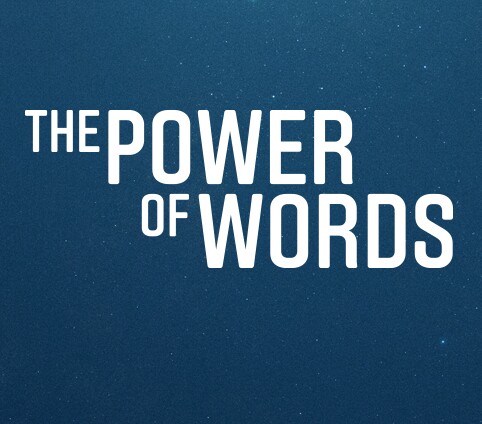 This is not a post about what headlines work better than others, or what power words you need to use, or how many syllables in the subject line of an email creates more interest. Rather this post has to do with something that every company needs to revisit since there will LOTS of marketing dollars put into play for 2016. Specifically, this is about the need to change the words that your company may be using, in some cases for far, far too long, in order to change how the company wants to be seen by their customers.
This is not a post about what headlines work better than others, or what power words you need to use, or how many syllables in the subject line of an email creates more interest. Rather this post has to do with something that every company needs to revisit since there will LOTS of marketing dollars put into play for 2016. Specifically, this is about the need to change the words that your company may be using, in some cases for far, far too long, in order to change how the company wants to be seen by their customers.
You’re probably saying “Yeah, yeah, yeah. I’ve heard that before. What else do you have?” Well here’s the deal: so many marketing folks are hung up on using words and saying things that are either “ways we describe our product” or are industry-speak that they sound un-interesting, un-inviting and more times than not, just like their competitors…which isn’t a good place to be. In turn, you’re valuable marketing dollars are wasted.
Over the course of my business career, I’ve been really fortunate to have worked with a number of really good copywriters. If you’ve ever spent any time in a marketing or advertising agency, you know just how critically important it is to have fantastic copywriters who know how to craft messaging so that in addition to being imaginative, original and fresh, the copy is so interesting that people want to buy the product. Unfortunately, and we all know this to be the case, many companies waste budgetary dollars on trying to convey an idea, a value proposition, or a reason for buying, with below par messaging that the prospective customer won’t even give second thought to. I can’t tell you how many times my wife and I have seen an ad or commercial where we’ve looked an one another and said “What the heck was that?” You have as well…I know you have.
And let’s not forget about online…like websites for example. Visiting websites with bad copywriting can be cringe-worthy as well as just plain boring! Product stories without a conclusion, meaningless purpose statements and yawning lists of statistics are a few other reasons prospects will click out of a poorly-written website. What a waste of money from the creation of the idea to the production to the media cost, right?
Well here’s something I learned over my 30+ years helping companies…from Fortune 100 to mom-pop’s alike… copy is not valued, and I mean really good copy, as it should be. It’s primarily because of two reasons: First, people are becoming more and more visual in today’s world and second, Mar-com folks have done so much writing that they’ve devalued copy in favor of other advertising or marketing messaging components such as accompanying visuals, click-throughs, QR-codes, etc.
So as you take another look at your marketing materials, and I would suggest all of your marketing materials, here are 5 simple things to have your messaging be acted upon:
The big finish: You may have already seen this video. It’s been recreated in a number of different languages around the world and speaks to the connecting point between a blind beggar and those who pass him by. I find inspiration every time I see the video and think you may find the same as it serves to illustrate the power that your choice of words can have in marketing your products, your services and your business.
####
Rolf Gutknecht is vice president, director of account services for LA ads. To discuss your thoughts with Rolf on this blog or any marketing matters, email via this link, or visit www.LAadsMarketing.com. You can also connect with Rolf on LinkedIn.
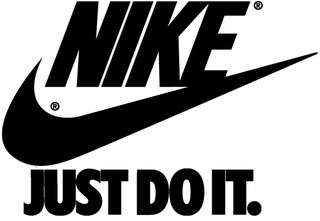 Oh, the wonder of beautifully crafted taglines. Those few strategically selected words that sum up everything your business stands for and what you want your target audience to know about you. They’ve made companies fortunes by telling people what makes them stand out in the sea of sameness. Consider FedEx’s brilliant “When it absolutely, positively has to be there overnight.” Nine simple words that tell FedEx buyers precisely what they’re going to get, while simultaneously informing all of its employees what their mission is. What if FedEx’s slogan was “We ship things!”? Would Nike be as successful if it allowed an executive committee to red-pencil “Just do it” into “When you need great shoes?” How would BMW’s vision change if “The Ultimate Driving Machine” became “Our cars are fun to drive!” My point is that these companies didn’t settle for weak platitudes or vague, generalized statements that could have applied to their competitors. Nope, they decided that they weren’t going to settle. Instead standing out and differentiating themselves was business-critical. Can the same be said for your company and its marketing? Do you have a themeline or slogan that makes you stand out? Is it unique and memorable? Or is it mediocre because somewhere down the line, people settled?
Oh, the wonder of beautifully crafted taglines. Those few strategically selected words that sum up everything your business stands for and what you want your target audience to know about you. They’ve made companies fortunes by telling people what makes them stand out in the sea of sameness. Consider FedEx’s brilliant “When it absolutely, positively has to be there overnight.” Nine simple words that tell FedEx buyers precisely what they’re going to get, while simultaneously informing all of its employees what their mission is. What if FedEx’s slogan was “We ship things!”? Would Nike be as successful if it allowed an executive committee to red-pencil “Just do it” into “When you need great shoes?” How would BMW’s vision change if “The Ultimate Driving Machine” became “Our cars are fun to drive!” My point is that these companies didn’t settle for weak platitudes or vague, generalized statements that could have applied to their competitors. Nope, they decided that they weren’t going to settle. Instead standing out and differentiating themselves was business-critical. Can the same be said for your company and its marketing? Do you have a themeline or slogan that makes you stand out? Is it unique and memorable? Or is it mediocre because somewhere down the line, people settled?
Imagine you owned a small piece of your buyers’ brains. And every time they thought about making a purchase where your product or service could be considered as an option, the brand or company name came to mind. For example if they were thirsty, they thought, “This Buds for you, “ or if they wanted a burger they thought, “Have it your way!” or if they when were tired and looking for a lodging for the night they remembered “We’ll leave the light on for ya!” That’s what the marketing slogans from Budweiser, Burger King and Motel 6 do, they help people remember a product and increase their propensity to buy. And that’s what a good marketing slogan can do for you. Unlike your company tagline or marketing message, your marketing slogan may change regularly or you may have more than one. For example American Express has: “Membership has its privileges.” And “ Don’t leave home without it.”
The taglines that work the hardest are not puns or rhymes, but ones that present many layers of meaning, where one layer can speak to the product while another speaks to value or even a brand a brand belief. It can manifest itself in any number of ways…online or offline. In ads and as a social media hashtag. On promotional products and product packaging. Most everywhere.
So what does a good tagline do? At its best, a good tagline conveys a singular value, loud and clear, on what a brand stands for. Remember, powerful words are powerful things. It also connects across all generations, geographies and markets, and becomes relevant for the consumer in his or her own personal way. And the right tagline doesn’t work for competitors because it’s only unique to your brand/company. Unfortunately, far, far, far too many taglines are generic and meaningless. In this time of technology disruption and increasing competition, clear positioning is valuable. Problems occur when the company and its messaging doesn’t have a focus, or the tagline could apply just as easily to other companies. In the marketplace, taglines are used to quickly communicate company differentiation. That said, taglines aren’t developed for customers alone. They’re also important for internal audiences as they can align an organization around a common cause and vision.
With that in mind, there are plenty of taglines out there that don’t work because they fail to connect. They’re easily overlooked, dismissed as “every day,” they lack originality or even mistaken for another brand. This usually happens when one of these mistakes happens:
Alternatively, good taglines have a number of hard-working qualities to them. They’re:
The process of developing a fresh, original and imaginative tagline is no easy task. From competitive research and brainstorming to paring down the list of options to more brainstorming, the process can take more time than you think …not to mention the back-and-forth given the stakeholders who are involved. And even then, the tagline may not be “all that.” That said, here’s how powerful a tagline can be – after 50+ years! Avis Rent-A-Car built its business with “We Try Harder” (which they finally put out to pasture just a few years ago). How the phrase came to be sounds like something out of Mad Men. The tagline was created in 1962 and actually came about in the response that Bill Bernbach, the co-founder of DDB, received from company management when asking why anyone ever rents a car from them. “We try harder” was the answer. Within a year, Avis turned a profit for the first time in over a decade and the rest is history.
####
Rolf Gutknecht is vice president, director of account services for LA ads. To discuss your thoughts with Rolf on this blog or any marketing matters, email via this link, or visit www.LAadsMarketing.com. You can also connect with Rolf on LinkedIn.
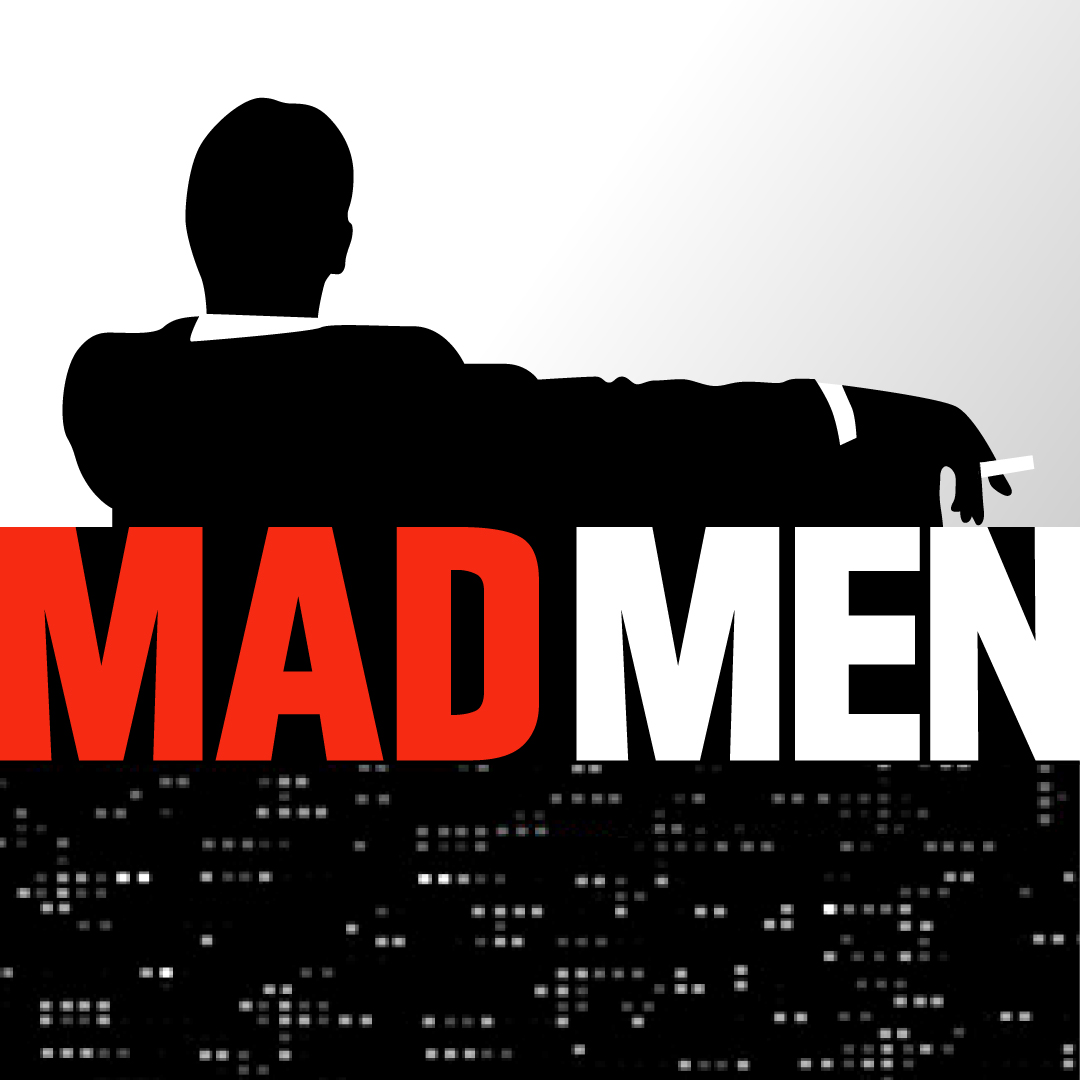 I was having lunch with a friend who is well-respected and recognized in the advertising industry (age of “Mad Men”), when we both started reciting well-known marketing/advertising quotes and how there are as relevant today as they were 40 to 60 years ago. Unfortunately, too many marketing director types immediately dismiss these pearls of marketing wisdom because they think “that was then and this is now.” The problem with that type of thinking is that these people are doomed to make the same mistakes over and over again because they don’t get one important fact: marketing has the same challenges as it did years ago which, in short, is the need to differentiate your message from competitors so people buy your product or do business with you. It’s we just have a lot more channels to contend with today.
I was having lunch with a friend who is well-respected and recognized in the advertising industry (age of “Mad Men”), when we both started reciting well-known marketing/advertising quotes and how there are as relevant today as they were 40 to 60 years ago. Unfortunately, too many marketing director types immediately dismiss these pearls of marketing wisdom because they think “that was then and this is now.” The problem with that type of thinking is that these people are doomed to make the same mistakes over and over again because they don’t get one important fact: marketing has the same challenges as it did years ago which, in short, is the need to differentiate your message from competitors so people buy your product or do business with you. It’s we just have a lot more channels to contend with today.
So, here are five famous marketing/advertising quotes, with a few thoughts on how they relate to your efforts, whether you’re a social media manager, content marketer, or advertiser:
1. “The truth isn’t the truth until people believe you, and they can’t believe you if they don’t know what you’re saying, and they can’t know what you’re saying if they don’t listen to you, and they won’t listen to you if you’re not interesting, and you won’t be interesting until you do and say things imaginatively, originally, freshly.” – Bill Bernbach
My all-time favorite advertising/marketing quote because it really goes to the heart of getting your product or company’s message recognized and acted upon. If you believe what Mr. Bernbach says, and frankly, how can you not, then the whole idea of developing uninspiring, status-quo, “beige” marketing messaging should never be settled for again…ever. Why put forth the effort of creating something that becomes largely invisible to your audience? This quote goes hand in hand with another Bernbach quote: “You can say the right thing about a product and nobody will listen. You’ve got to say it in such a way that people will feel it in their gut. Because if they don’t feel it, nothing will happen.”
2. “When you reach for the stars you might not quite get one, but you won’t come up with a handful of mud either.” – Leo Burnett
I’ve worked both on the agency side as well as the client side and to this date, I’m still shocked at how often the client thinks so little about the growth opportunities for their product or service, while the agency thinks that the product or service is just the “cat’s meow.” Don’t be an “Eeyore-type.” Think big! While there’s also something to be said for having realistic expectations about what you can achieve, there’s nothing wrong with having big dreams and aiming to make them a reality. If you aim a little higher you might just find yourself achieving things that you might not have thought possible.
3. “Why keep a dog and bark yourself?” – David Ogilvy
If you’ve decided that working with a marketing firm is going to help you communicate your value proposition in ways and forms that you otherwise might not have come up with, then believe in the abilities of those you’ve entrusted to do this and step away from playing copywriter or art director. Yes, you’ll know your product much better than the agency in the same way the agency knows how to communicate it to the marketplace much better than you. In short, collaborating is a good thing. Dictating to your marketing partner, well, that’s not how to get the best work done.
4. “I’d rather apologize than to be so timid as to never try and do anything smart or brave.” – Lee Clow
Lee, who created legendary advertising ranging from Apple Computer’s “Think Different” to the Energizer Bunny to Taco Bell’s Chihuahua to California Cooler, knows of which he speaks. The reason these brands became megabrands is because they recognized good work and weren’t afraid, yes, unafraid, to put it out there for the world to embrace. They rejected the status quo. While your company might not ever become a megabrand, it certainly has in it the ability to fascinate your audience more than it does now and in doing so make your competitors say “Why didn’t we think of that!”
5. “On the average, five times as many people read the headline as read the body copy. When you have written your headline, you have spent eighty cents out of your dollar.” – David Ogilvy
The headline or title of your ad, blog post, collateral piece, Twitter post, YouTube video, etc., is the most effective way to get people to give you the 8 seconds of attention that you want before the reader decides to move on to something else. In short, the purpose of your headline is to get people to read your first line. The purpose of your opening line is to get people to read the next one. If you don’t embrace – and more importantly, implement – this principle, you’re going to miss out on a lot of readers. Employ headlines that stop the prospective customer. Don’t let it be anything but scintillating.
“The consumer isn’t a moron; she is your wife.” – David Ogilvy
“Rules are what the artist breaks; the memorable never emerged from a formula.” – Bill Bernbach
“Creativity may well be the last legal unfair competitive advantage we can take to run over the competition.” – Dave Trott
“Stopping advertising to save money is like stopping your watch to save time.” – Henry Ford
“Don’t tell me how good you make it; tell me how good it makes me when I use it.” – Leo Burnett
So take these inspirational quotes to heart and make your advertising and marketing ancestors proud! If you want your brand and products to get more noticed in today’s media-saturated world, you might not have to look any further than the original Mad Men and marketing legends. Their legends for a reason!
####
Rolf Gutknecht is vice president, director of account services for LA ads. To discuss your thoughts with Rolf on this blog or any marketing matters, email via this link, or visit www.LAadsMarketing.com. You can also connect with Rolf on LinkedIn.
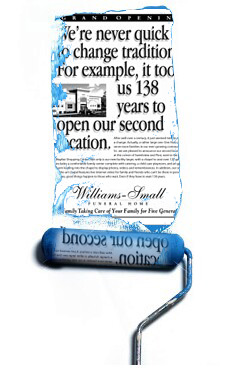 As I write this, my house is in complete disarray. We have a contractor tearing up my girls’ old bedrooms and converting them into a guestroom and an art studio for my wife. It isn’t pretty…but soon will be. As I walk past the tarp and power tools and stepladders, I’m so appreciative that there are people whom I can call on who know how to do this with an assured and desirable outcome. I use experts to prepare my taxes, to check under my engine, to tell me my cholesterol is too high. I leave the do-it-yourself projects to things that have very low consequences if I screw it up.
As I write this, my house is in complete disarray. We have a contractor tearing up my girls’ old bedrooms and converting them into a guestroom and an art studio for my wife. It isn’t pretty…but soon will be. As I walk past the tarp and power tools and stepladders, I’m so appreciative that there are people whom I can call on who know how to do this with an assured and desirable outcome. I use experts to prepare my taxes, to check under my engine, to tell me my cholesterol is too high. I leave the do-it-yourself projects to things that have very low consequences if I screw it up.
Marketing is not a low-consequence endeavor. If it doesn’t succeed, company fortunes and employee livelihoods are at risk. And yet, for too many companies, marketing continues to be a do-it-yourself project.
It doesn’t take an expert to see the results of this by simply flipping through the pages of any newspaper or magazine. Home-made ads are usually the ones you ignore, are plainly designed (or far worse) without style or a fresh point of view. The same goes for websites, Facebook pages, direct mail, radio commercials and company brochures.
D-I-Y is pervasive – but hardly ever persuasive!
We get inquiries all the time from businesses who have been creating their home-made ads and realize that the outcomes haven’t been what they’d wish for. But just as quickly, they pull back, fearful of relinquishing control and suffering sticker shock when they compare the cost of their D-I-Y efforts to professional services. What they’re missing is that by spending money for professional objectivity, expertise and talent, they dramatically increase the chances of their marketing actually having serious bottom-line impact.
The results of making the leap from D-I-Y to seeking out professional help can be dramatic. I’ve seen countless times sizable changes in traffic, sales and inquiries that resulted from putting the marketing in the hands of experts who excel in that craft. That’s how after 20 years, some businesses become overnight successes!
And by “experts,” I’m not talking about letting the shop that designed your banners or flyers design an ad. They’re experts in quick print projects. They’re not a marketing firm or an advertising agency whose portfolio of work comes with recognizable brands; as a result they don’t know how to help you build a long-term competitive position in the marketplace. Nor am I talking about brother Bernie’s kid who took two semesters of computer graphics and makes rock band t-shirt designs.
Every town has ad agencies and marketing firms who can provide you the ideal strategic guidance and talent required to make a difference. As you know, they come in just about every flavor, from one-man shops to multi-floor mega-agencies. Selecting the right company is a matter of chemistry, portfolio, history of success and their desire to win your business. It’s no different than choosing an accountant, contractor or garage mechanic. Price is a factor, but should never be the deciding factor – any more than seeking out the cheapest physician when you’re worried about internal bleeding. (Remember, it’s your company’s life on the line.)
Here are some tips in selecting a marketing provider (or better yet, a marketing partner!):
Just remember, success isn’t about your being able to do everything or know everything. It’s about being able to find the very best resources to complement what you do and know.
That’s why I know when to run to Home Depot myself and when to call on the guys who are ripping out the girls’ closets right about now.
####
Rolf Gutknecht is vice president, director of account services for LA ads. To discuss your thoughts with Rolf on this blog or any marketing matters, email via this link, or visit www.LAadsMarketing.com. You can also connect with Rolf on LinkedIn.
 Oh, the wonder of beautifully crafted taglines. Those few strategically selected words that sum up everything your business stands for and what you want your target audience to know about you. They’ve made companies fortunes by telling people what makes them standout in the sea of sameness. Consider FedEx’s brilliant “When it absolutely, positively has to be there overnight.” Nine simple words that tell FedEx buyers precisely what they’re going to get, while simultaneously informing all of its employees what their mission is. What if FedEx’s slogan was “We ship things!”? Would Nike be as successful if it allowed an executive committee to red-pencil “Just do it” into “When you need great shoes”? How would BMW’s vision change if “The Ultimate Driving Machine” became “Our cars are fun to drive!” My point is that these companies didn’t settle for weak platitudes or vague, generalized statements that could have applied to their competitors. Nope, they decided that they weren’t going to settle. Instead standing out and differentiating themselves was business-critical. Can the same be said for your company and its marketing? Do you have a themeline or slogan that makes you stand out? Is it unique and memorable? Or is it mediocre because somewhere down the line, people settled?
Oh, the wonder of beautifully crafted taglines. Those few strategically selected words that sum up everything your business stands for and what you want your target audience to know about you. They’ve made companies fortunes by telling people what makes them standout in the sea of sameness. Consider FedEx’s brilliant “When it absolutely, positively has to be there overnight.” Nine simple words that tell FedEx buyers precisely what they’re going to get, while simultaneously informing all of its employees what their mission is. What if FedEx’s slogan was “We ship things!”? Would Nike be as successful if it allowed an executive committee to red-pencil “Just do it” into “When you need great shoes”? How would BMW’s vision change if “The Ultimate Driving Machine” became “Our cars are fun to drive!” My point is that these companies didn’t settle for weak platitudes or vague, generalized statements that could have applied to their competitors. Nope, they decided that they weren’t going to settle. Instead standing out and differentiating themselves was business-critical. Can the same be said for your company and its marketing? Do you have a themeline or slogan that makes you stand out? Is it unique and memorable? Or is it mediocre because somewhere down the line, people settled?
Let’s face it, we have a tendency to settle. It’s almost human nature. We settle for something that’s not just quite right, an outfit that isn’t our best look, a job that doesn’t maximize our talents or an ad or website page that’s okay or just “good enough.” While the act of compromise in life, relationships and particularly conflict is an admirable trait, compromise or “settling for” in marketing is a death knell.
You see, the whole point of your marketing activities is to get noticed; get engaged with your audience; and have your work be acted upon to bring in the business. Alternatively, anonymity, swimming in the center of a school of other fish, may be a good survival tactic if you are an anchovy, but it is not a good survival tactic for business. So you have to wonder why so much marketing – and so many marketers – feel the need to play “follow the leader” with respect to marketing trends.
The logic is that if others have done something successfully, you just need to do the same thing. Well, maybe. And then again, maybe not. As we all know, breakthrough products and breakthrough marketing campaigns are not achieved through conformity. Note the word “break” in breakthrough. These are the products and campaigns that break the rules. These are the products and campaigns that use insight, intuition, experience, sensitivity to the marketplace – and arguably the most important thing….courage – to do things differently. To break away from the status quo.
It is certainly true that most companies don’t have that innate insight and courage to be successfully different. We can’t all be like Steve Jobs. But for those are willing to do things differently and well, for those who want their companies to stand out, then the only rule that matters is: You cannot achieve exceptional success through conformity.
To that end, you can have your brand and product/service stand out if you’re willing to take a risk. For starters, ask yourself these three questions:
1. What’s can you say about your company that’s seen as a unique or fresh alternative to your competitors? This can range from the product or service you offer to the way you do business to that of sharing your wisdom. Think beyond the obvious. Dig deeper. Ask yourself a bunch of “So what does that mean?” and “Why would our customer care?” with each answer that’s given.
2. What medium makes the most sense for your brand? The goal is to create a campaign that drives conversation and ultimately revenue. So what imaginative or different ways (to what you’ve been doing) should be explored and implemented. Doing the same thing from one campaign to another, especially given all of the new technological and interesting messaging channels out there, is not only boring but could be seen by management as, well, not a great reflection on yourself.
3. How will you execute your campaign? Don’t risk looking amateurish or wasting time by trying to save money. Engage yourself with people that can help you get to the BIG idea and then help you implement it in a way that you and your executive management team are proud of. You’ll always remember the big successes, while you’ll forget how much money you saved or spent.
Clearly, whether it is investing in advertising, developing a little more creativity, spending the time to follow-up or making the effort to engage with your customers, you can easily elevate your marketing to where it needs to be. Anyways, what progressive marketer wants to settle for second best, or worse, be recognized as mediocre? That doesn’t play well either at the current company or when you need to show your portfolio of work if switching jobs. Instead, risk being brilliant instead.
####
Rolf Gutknecht is vice president, director of account services for LA ads. To discuss your thoughts with Rolf on this blog or any marketing matters, email via this link, or visit www.LAadsMarketing.com. You can also connect with Rolf on LinkedIn.
 Over the weekend, my daughter wanted to update the look of her bedroom to reflect, as she told me on more than one occasion, …the “new her.” Well, as we finished painting and as she started moving the furniture around and bringing new stuff into the room as well, it occurred to me that she was just “refreshing” the look of the room and not “rebranding” who she was as a person. You see, while the color of her room had changed, a lot of other things remained the same because they spoke to who she is and what’s important to her. And the same thing holds true for companies…maybe yours, as well.
Over the weekend, my daughter wanted to update the look of her bedroom to reflect, as she told me on more than one occasion, …the “new her.” Well, as we finished painting and as she started moving the furniture around and bringing new stuff into the room as well, it occurred to me that she was just “refreshing” the look of the room and not “rebranding” who she was as a person. You see, while the color of her room had changed, a lot of other things remained the same because they spoke to who she is and what’s important to her. And the same thing holds true for companies…maybe yours, as well.
And herein lies the question: When the need arises, should you be rebranding or just refreshing your brand?
As we know, rebranding your business can be an intensive process that can literally redefine a company from the ground up. It’s more than just slapping on a new coat of colors. Instead, a rebrand is a complete redo of an already established brand because the brand has become somewhat stale, insignificant, or are just dated. This often happens when the brand has been around for a while, regardless of size or industry. Contributing factors include: aggressive competition, becoming “lost in time” with an aging customer base, or industry changes that begin to turn a company’s brand irrelevant.
However, rebranding a company from the ground up might not be the best bet for several reasons. For one, rebranding a company tends to erase history in the mind of the customer and you not only run the risk alienating current customers but confounding prospective customers. Oh, and don’t forget about the money that’s involved. Still, for many businesses, it’s necessary in order to stay competitive.
However, it is possible to take a small-scale approach by simply refreshing your brand. Think of it as remodeling your home. It’s still the same house that keeps you safe and warm; you’re just replacing the dark brown shag carpeting with hardwood floors and the yellow tile countertops with granite. It’s more of a remodel of your existing brand than a complete rebuild.
Ok, so why should you be considering this option? Well, if your company has been around for a while, maybe it’s time to revitalize your dated look, or make it more appealing to a contemporary audience, or target a new audience, or address current market conditions. This involves revising/reinvigorating a brand’s positioning and branding imagery to ensure that the messaging is not only strategically sound, but that the brand’s look is up-to-date while still keeping much of the brand’s equity. In short, it’s less of an overhaul, and more of a clarification. The brand name is left untouched, but there are changes in the logo design. Maybe it’s the sizing, placement and type of images and graphics to be used or additional shades of brand colors. It could be a new look to your website, packaging or a change in the tagline.
With this in mind, here are five things are worth considering:
Refreshing your brand is no walk in the park. It takes a lot of preparation and hard work to do it right, but it can help to ensure your brand stays fresh and continues to resonate with your customers. What better way to say “hey, we’re changing with the times” than to refresh your company image.
We had a client call last week telling us that she had received a letter from someone stating how much they were put off by an ad we were running. She was wondering if we should hold off running that ad and instead run another one we had produced. My response was “Heck no. I’m thrilled that someone felt that way. I hope we get a few more letters.” Why would I say that, right?
You see, your company, like 99.9% (there’s always that oddball out there) wants to be loved. You want adoring customers, enthusiastic vendors, committed partners, etc. Yet in reality, few companies are really appreciated. In fact, most companies and marketing messages are tolerated at best, and at worst, ignored. And do you know why? It’s because most company messaging is too forgettable and too dull to spark any type of reaction.
If you want your company to have passionate customers, dedicated partners, etc., you must first inspire strong responses. Only then can you convince people to love your company and become raving fans of your brand. But here’s the kicker: as you attract fans, you’re also bound to get the critics, or “Haters.” As we learned in physics: Every action creates an equal and opposite reaction. These Haters are the ones that write nasty letters or post negative comments on sites like Yelp or Angie’s list. That said, here’s something which might also cause you to recoil a bit. Experience has taught me that it’s OK to have some not like your brand (not a lot, of course). Yup, you heard me right. In fact, having a few critics is essential. The undeniable reality is that if you’re not eliciting a negative response from someone somewhere, then you’re probably not that fascinating to anyone. No one remembers lukewarm!
Fresh, imaginative, and original ideas come across as unfamiliar, even uncomfortable, which means that not everyone will like it. But unfortunately, most companies spend too much time worrying over damage control for the Haters that they never get up the nerve to be exceptional in the first place. In short, Haters are the price one pays for being special. Apple has Haters. Starbucks has Haters. Accept their presence but do not let them stop you from moving forward.
On the other hand you have the advocates, evangelists, loyalist…the Lovers. They don’t just buy your product or service, they also accept price increases and forgive occasional “issues.” When your product is sold out in one store, they’ll drive to another store to find it. When the competition tries to appeal to them with an incentive, they stay loyal. Lovers also do your marketing work for you — for free. They write nice things in online reviews, and even occasionally re-post your content online. In every aspect of your company, Lovers will reward you with new business and higher sales. They’re not just buying your products for price or utility.
So you now have the Lovers on the left and the Haters on the right and between them you have a set of customers who give you little loyalty or value. Let’s call this group the “Lukewarmers”. Maybe a good way of describing this group is like that friend of yours that would come over to watch a game but as soon as the beer ran out…so would he. Kind of like a friend…but not really. In the same way, these indifferent customers make a purchase here and there but don’t add much of anything else.
The Lukewarmers also have a really bad habit of not caring. They won’t buy your product unless it’s the cheapest or most convenient option which means they’re only buying you until a cheaper or more convenient alternative comes around. So in addition to not being loyal, they’re also expensive to maintain because you’re spending money to get them as customers and they never really pay out over multiple purchases.
In today’s marketplace, this middle ground is death!! Not caring is not buying. Not caring is inaction. The Lukewarmers leave for just the smallest of reasons. So how do you get people to quit being Lukewarmers and start actively choosing you and your brand?
Simply put, if your company wants to influence purchase decisions, you need to provoke strong and immediate emotional reactions so that people bond with your brand or company. The goal isn’t to create, or even stay away from controversy, but to avoid creating legions of people who simply don’t care.
The world is not changed by people who sort of care or don’t care at all. Stop focusing on the Lukewarmer. And don’t let the Haters keep you from your goals. Start accumulating the Lovers. And it all starts by having your marketing and advertising being original and captivating. There’s no middle ground here.
Each week I probably look through 5-10 trade journals within various industries that our clients do business in. And each time I finish going through a trade journal, I’m astounded at how many companies/brands paid good money to run ads that have no impact…no appeal…no creativity attached to them. It’s as though the people making the advertising or marketing decisions were genetically incapable of creating messaging that stands out, and so they defaulted to their risk-adverse flavor…vanilla. Having been in the business a while, dealing  with all sorts of companies and people, I believe the number 1 reason for these boring “vanilla” ad messages is a result of trying to please all the people all the time.
with all sorts of companies and people, I believe the number 1 reason for these boring “vanilla” ad messages is a result of trying to please all the people all the time.
On that last point, we all know you can’t please all the people all the time, so why do so many organizations try to do so? What intrigues me is just how much effort some folks expend trying to do just that. Like myself, I’m sure you’ve seen these sad attempts to please “everyone” on every type of messaging canvas there is…from websites to ads to sales support material to tradeshow booths, etc., Pick an industry, any industry. From packaged goods to retail to professional services to consumer goods to non-profit…including the one you do business in as well. Vanilla is by far the favorite flavor.
I think there has been a retreat from being bold. In the public sector and the private sector, from CEOs to politicians, being inoffensive and bland in communication appears to be a highly valued skill. The issue with this is that, once everything becomes vanilla, it loses power and uniqueness. It lacks any special flavors. It lacks any pretty colors. It’s just ordinary. Worst of all, there’s nothing about it that makes it stand out from all the other plain vanilla marketing efforts of every other business that’s competing with you. To stand out, to be different, to be memorable, takes boldness.
Let me put it another way: How many people outside of your organization have either written or told you that what you’re doing and saying is the type of approach that they wished their own company did? You see, herein lies an important message for brands: if you always play it safe and try not to surprise anybody, it’s highly unlikely anyone is going to get really excited about your brand. Vanilla brands might not have enemies, but they also don’t have passionate advocates whose enthusiasm spreads. I remember being told a marketing truth when I first started out in this business that’s worth sharing: “In order to win the race, you can’t stand still. Vanilla marketing is standing still.”
In today’s world, people get so much plain vanilla marketing shoved in front of their faces every day, they’ve developed a natural immunity to it. Vanilla marketing almost becomes invisible to them. They subconsciously block it out. Your marketing dare not have the monotone delivery of Ben Stein in Ferris Bueller’s Day Off: “Anybody? Anybody? Bueller? Bueller?”.
People want to feel something after reading, hearing or seeing what you have to say. So excite them, educate them, annoy them (if that’s your style and it fits your brand), surprise them, make them laugh! Do anything but bore them.
You can be unique by doing things differently that everyone else. For example, instead of sending out a typical direct mail piece, try mailers that have unusual shapes like messages in a bottle or coconuts. Instead of an ad that shows a “catalog” of your product offerings, focus on the one most unique feature of your one most unique product with a short, crisp headline and almost no body copy. Go for impact.
The bottom line is fighting the desire to be all things to all people yields the following benefits:
So, however you go about it, stop dishing out plain vanilla marketing and start scooping out interesting flavors (think “Cherry Garcia”; “Chubby Hubby”; or “Chunky Monkey”, etc.) that stand out and are uniquely your own. We’ll all pay more attention to what you want to tell us.
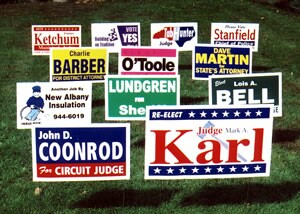 I’m so glad it’s over. Probably like you, my home phone was being called at an increasing rate the closer that we got to Election Day. Candidate faces and names were everywhere and on everything from direct mail to lawn signs, outdoor boards to TV and radio commercials. As annoying as it was, there were a number of messaging strategies and tactics that caught my attention because they were executed exceedingly well, which we as marketers should consider adding to our communication toolkits for use tomorrow, next week or next month. For as we all know, your customer and prospects are still being bombarded with marketing messages each and every day by both you and your competitors.
I’m so glad it’s over. Probably like you, my home phone was being called at an increasing rate the closer that we got to Election Day. Candidate faces and names were everywhere and on everything from direct mail to lawn signs, outdoor boards to TV and radio commercials. As annoying as it was, there were a number of messaging strategies and tactics that caught my attention because they were executed exceedingly well, which we as marketers should consider adding to our communication toolkits for use tomorrow, next week or next month. For as we all know, your customer and prospects are still being bombarded with marketing messages each and every day by both you and your competitors.
So let me share with you some strategies and tactics used by politicians leading up to November 6th that are worth remembering.
1) Understand the takeaway
Truth is, these folks do have some things to teach us marketers, particularly regarding messaging. They see the world a bit differently than we do, and use techniques most people didn’t learn in school or on the job, such as: It’s Not What You Say, It’s What People Hear. You can have the best message in the world, but the person on the receiving end will always understand it through the prism of his or her own emotions, preconceptions, prejudices, and existing beliefs. We focus too much of our energy on finding the best way to sell our message, and too little on understanding the filters consumers have as we deliver it. Political marketers care more about takeaways than inputs.
2) Make it look good
Have you seen the biographic videos produced by the two Presidential candidates? They were extraordinarily well done. A number of other political ads were also well done from a storytelling and video perspective. They stayed on message knowing the one critical point (not 4 or 5 points) that they want to make sure was communicated. The videos were shot and narrated well. They didn’t hire amateurs to do their work but had expert writers and producers creating the content. Like with your business, there’s too much at stake to do cheap stuff because everyone knows what cheap means. People interpret what your company/brands stands for based on the quality of creative and the media channel it’s presented on. Don’t go out until you look good.
3) Be the genuine article
Business marketing sometimes seems to stretch the truth a bit too much. When marketing messages are sufficiently public and sufficiently wrong, the press will get wind and call you on the truth of your marketing. Transparency of your brand could never be more important. It is less about giving the appearance of perfection and more about being genuine and human as we build relationships. While it’s critically important to tell your story and the benefits of your product or service, it’s not fine to lie about them. My mom use to tell me “Lies have short legs.” Meaning, you can’t outrun the truth …so don’t stretch it very far.
4) You are who you say you are
In the world of politics, I would argue that there’s nothing as important as branding and having people recognize what the brand stands for. Brand consistency is always maintained. Unlike politicians, too many companies struggle with this, swinging wildly from one branding concept to another. Everything from the taglines, to the logos, to the visuals has been choreographed beautifully. Get your branding figured out right now. Here are a few questions to ask yourself to determine if your branding is clear:
5) Be social..not antisocial
Politicians don’t just post stuff to their respective Twitter or Facebook accounts and hope people will read it. Rather, they actually engage with their social media audience. They post images and video. They have their immediate families and supporters use social media regularly. How is your company using social media to spread the good word about your company? I’ll be the first to say that spending a lot of time, money and resources on social media is not right for every company, maybe even yours, but without some presence, you’re letting the competition become more visible and be seen as a legitimate business partner at your expense.
6) Telling the story again and again
Why are some political ads annoying? Some of it is the content, but I think most of the annoyance is the quantity of political advertising as elections draw near. But politicians know one thing: without a communications budget that allows you to be out in the market in a way that shows you’re “a player”, you won’t get the job done. Far too many companies who do ‘invisible marketing’ base their companies short and long term success on thinking that customers will pick them over a brand that’s actively marketing and better known. The takeaway is that repetition is key …but too much repetition annoys.
As I said earlier, I’m glad the madness of the political advertising season is over but I’m grateful to have learned a few things because each and every day customers and prospects are voting who they want to do business with. Let the winner be you.
 A friend and I were watching a football game on TV when a commercial came on for a paint retailer. At the end of the commercial, my friend said “I don’t trust them for a minute. They don’t look or sound the part at all.” I started thinking about why some companies are trusted and others aren’t. And so I’ll pose the question to you: in today’s marketplace, with people not wanting to be sold to but rather base their purchase decision on many other factors, is your company better off just selling products and services or selling trust along with your products?
A friend and I were watching a football game on TV when a commercial came on for a paint retailer. At the end of the commercial, my friend said “I don’t trust them for a minute. They don’t look or sound the part at all.” I started thinking about why some companies are trusted and others aren’t. And so I’ll pose the question to you: in today’s marketplace, with people not wanting to be sold to but rather base their purchase decision on many other factors, is your company better off just selling products and services or selling trust along with your products?
One of the greatest demonstrations of selling trust came about years ago when Chrysler Corporation was being dragged back from the brink of extinction by its then CEO, Lee Iacocca. Chrysler was seen as having a flawed product and not to be trusted to build a good car. Lesser men would have resorted to selling at the cheapest price with giant discounts and 0% interest. They would have also gone down with the ship by making futile arguments about the features/benefits of the cars. Iacocca rejected this thinking and instead sold his personal guarantee…his promise…by saying “If you can find a better car, buy it.”
So then, what are the few key factors that will make your business such a trusted and relied-on presence in your customers’ lives that they will stay with you – and spend with you – for many, many years?
As I write this, virtually every advertiser, marketer and seller struggles in an un-trusting world. The public has very, very, scorched fingers and badly-bruised confidence. The temptation to overcome this mistrust with stronger product pitches, cheaper prices or deeply discounted fees – did I mention, cheaper prices – is enormous. And dangerous. To do so worsens the fundamental problem of low trust and deprives you of the finances needed to effectively market at all.
Unfortunately, and we all see it in our personal and business lives, there are bunches of companies out there who are “hit and runners.” They’re more in the business of getting customers to make sales rather than making sales to get customers. The first provides only income. The second provides income and equity. It’s sort of like the difference between dating and a long-term marriage. It’s about being there and having the other person’s back. That the other knows you care about them. That you find ways to stay interesting and relevant over the years. Sad but true, most marketers don’t really think about a long-term marriage with customers. They take it for granted or give it no importance. They’re focused on income not equity. Like you, I buy things from stores or service providers where not even a feeble attempt at creating an ongoing relationship is made. I think the thinking is “We did OK, he’ll be back.” Well, maybe and then again maybe not.
So, what can companies do from a marketing standpoint to start the process of building trust within the minds of their current and prospective customers? Here are eight thought-starters:
So, while we as marketers understand that we’re in the business of helping drive revenue for the company among other challenges, let’s not lose track of the fact that it’s always easier to derive sales from an existing customer versus that of a new customer. And that only happens if they trust you. And they’ll only trust you if you look and act the part. Don’t have your company be a “poser”…you’ll be found out!